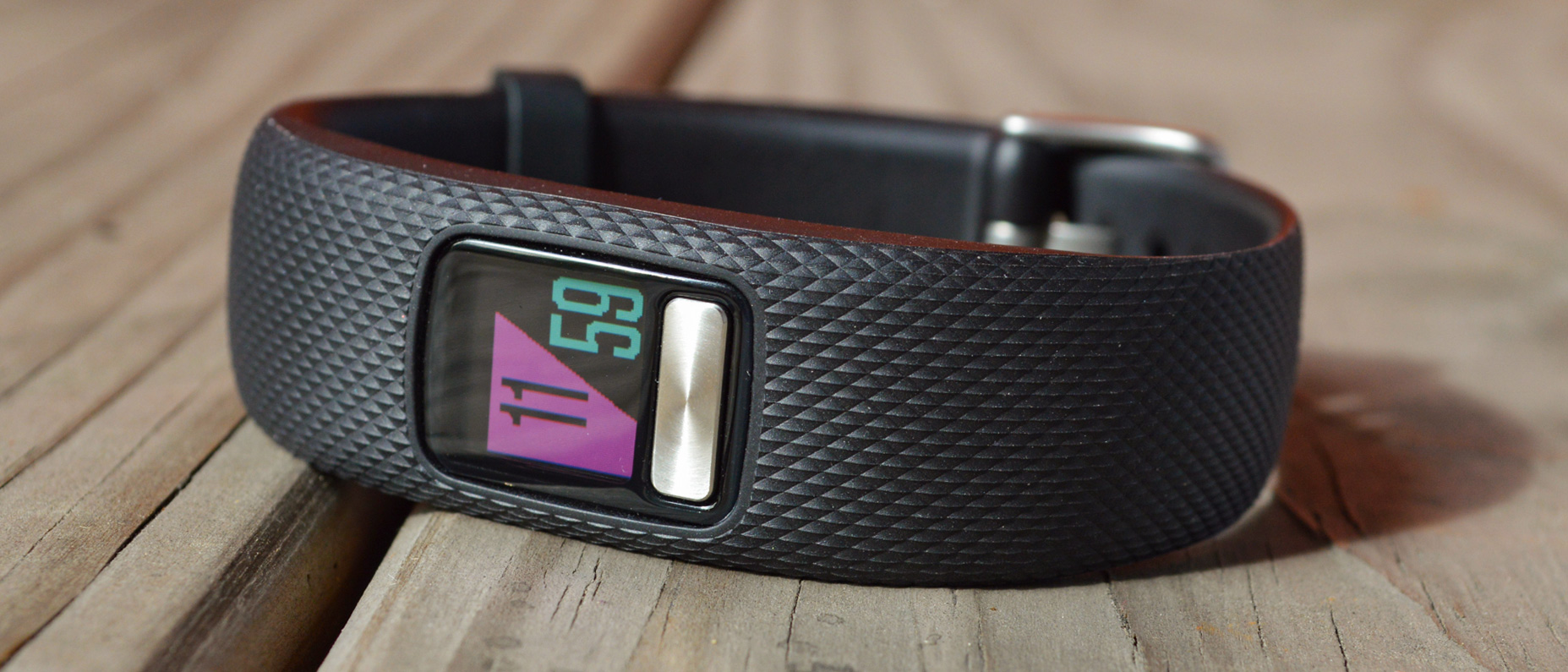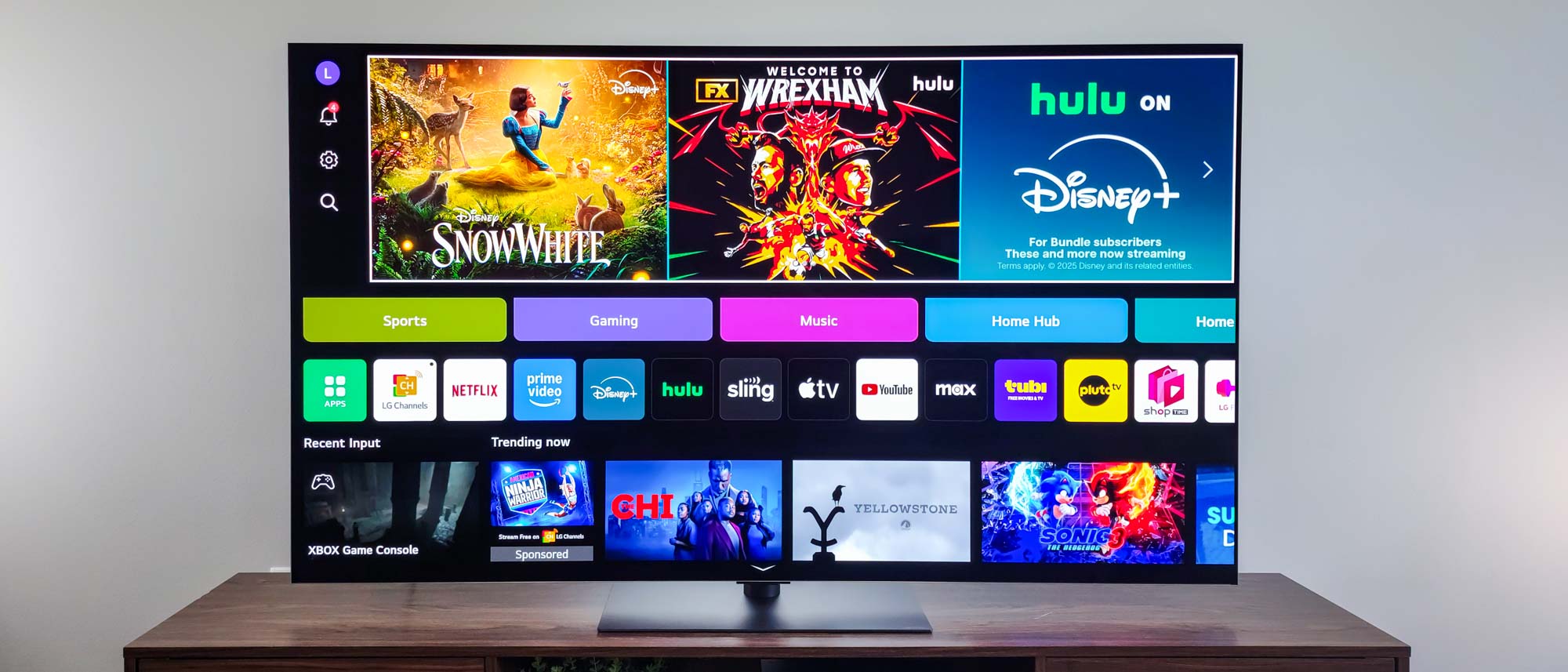Tom's Guide Verdict
Garmin's budget wearable is a surprisingly solid fitness tracker, but there's no reason to wear it all the time.
Pros
- +
1-year battery life
- +
Always-on display
- +
Garmin Connect app works with other ANT+ trackers
Cons
- -
No GPS or heart rate sensor
- -
Bad sleep tracking
- -
Bulky, unattractive strap
Why you can trust Tom's Guide
Fitbit may take credit for making the best fitness trackers mainstream, but Garmin has spent years catering to athletes. Garmin's first GPS-enabled runner's watch hit shelves five years before Fitbit was even founded. That's why you may want to give Garmin's stripped-down fitness tracker, the $80 Garmin Vivofit 4, a look.
The Garmin Vivofit 4 is the fourth generation of Garmin's entry-level activity-tracking band. If you're used to fitness trackers that are aimed at lifestyle users, the Vivofit 4 might seem underwhelming: It doesn't have a heart rate sensor, built-in GPS, touch screen or the ability to push notifications from your phone. It also has a distinctive "fitness tracker" look, thanks to its textured, rubbery sport band. The Vivofit 4 is meant to be worn 24/7 — it's waterproof (up to 50 meters) and it runs on a coin cell battery that will last as long as a year (depending on usage).
Looks and lack of smartwatch capabilities aside, the Vivofit 4 has its advantages: It's packed with solid activity-tracking technology, the battery life is unbeatable and it works with the Garmin Connect app, which is compatible with Garmin and ANT+ devices.
Garmin Vivofit 4 design: Not quite there
Garmin has been slowly improving the way the Vivofit line looks, and the Garmin Vivofit 4 has a better design than the first- and second-generation models. It's also got a few aesthetic upgrades from the Vivofit 3; namely, the included sport band has a traditional Tang buckle closure instead of the Vivofit 3's awkward, uncomfortable, wrap-under-the-wrist style. The Vivofit 4 also sports a colorful always-on display (that's relatively easy to read in bright sunlight) and a fancy, brushed-metal multifunction button.
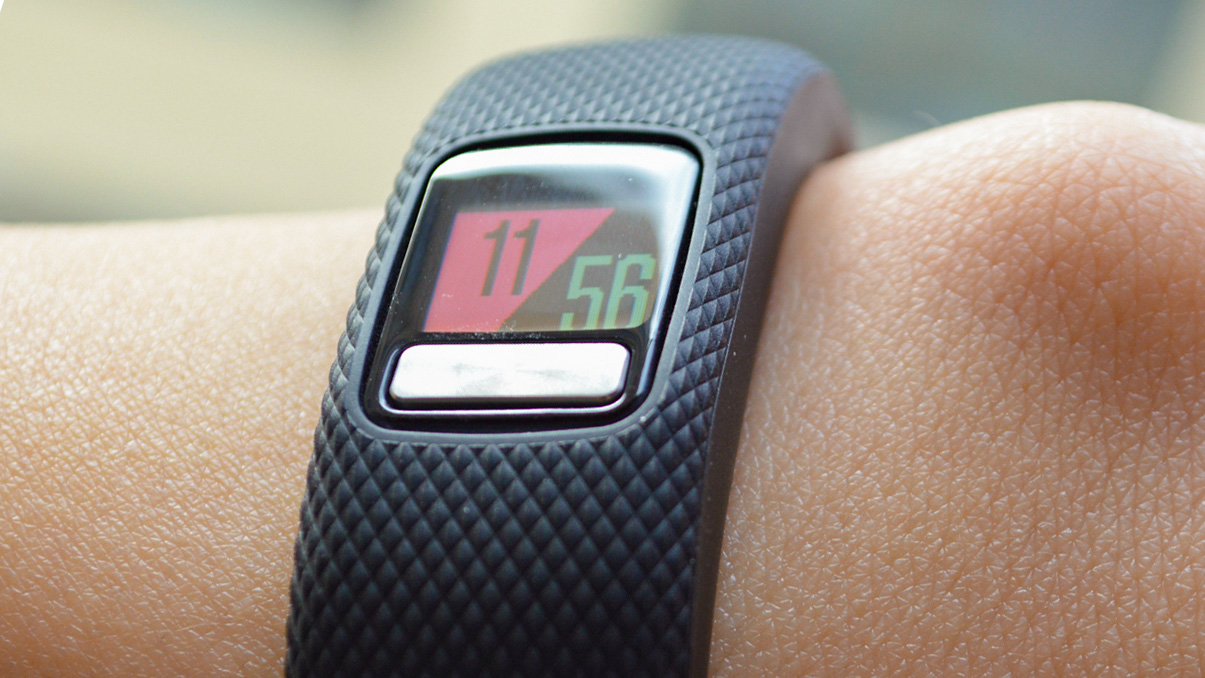
The Garmin Vivofit 4 is a curved device that comes tucked inside a flexible strap made of TPU or silicone, depending on color. You can buy the Vivofit 4 with different band colors (black, white, speckled black, speckled navy, speckled maroon) and in two different sizes (small/medium, large). Garmin sells sport bands in additional colors, but if you're looking for something that doesn't suggest you're training for a triathlon, you'll need to go to a third party, because the company doesn't make any regular band options for this tracker.

The included sport band is better designed than the Vivofit 3's band and doesn't cut into the skin, but it's not particularly comfortable for long periods. It's just a little too thick and stiff for comfort, though this is partially due to the device, which is larger than it looks. The band covers most of the Vivofit 4's body, so all you see when you're wearing the tracker is the screen and multifunction button — about 2 centimeters, when the device is actually 5.5 centimeters long.

The Garmin Vivofit 4 weighs 25 grams with the band (25.5 if you have the large size) and 11 grams without it. It's not huge, but it is heavier than minimalist fitness trackers like the Moov Now, which weighs 15.1 grams with the band. The bottom line here is that there's just no way this looks or feels like anything other than a fitness tracker. Because most of the device is covered in TPU/silicone, the band has a weird hump that looks very casual and fitness-y — you're not wearing this with a suit.
Garmin Vivofit 4 display: Small but usable
Garmin Vivofit 4 display: Small but usableThe Garmin Vivofit 4's display is tiny: 11 x 11 millimeters and 88 x 88 pixels. The screen shows just one metric at a time: time, date, steps, steps to your goal, distance, calories burned, weekly "intensity" minutes, and weather. You can toggle these metrics on and off in the Garmin Connect app, and there's also an option to add a custom widget (which is just text — the default is "beat yesterday").

The Vivofit 4 has one button, which is easy to get the hang of. Tap the button once to cycle through the different metrics, and tap and hold the button to enter the Vivofit 4's menu. Once you're in the menu, tap the button once to cycle through the menu options, and tap and hold the button to select an option.
You can do a number of things from the Garmin Vivofit 4's menu, but you'll mostly use it to sync the Vivofit 4 to your phone (the device does sync automatically, but this doesn't seem to work consistently). You can also manually record workouts, use a stopwatch or timer, find your phone and do a "Toe-to-Toe" challenge. A Toe-to-Toe challenge is a movement exercise that lets you challenge anyone with a compatible device — another Vivofit 4 or a Garmin Vivofit Jr 2 — to move around as much as possible in 2 minutes. At the end of the Toe-to-Toe challenge, your Vivofit 4 will display how many steps you took and whether you came in first or second. OK, so Toe-to-Toe challenges aren't going to replace your cardio, but they might make it more fun to get up and move around every so often, especially if you've got family members to compete with.
The Garmin Vivofit 4 also has a "find my phone" menu option, which can force a sound to play on your phone when you misplace it. This is a handy feature (and one you usually don't see in budget trackers), or it would be…if it worked. I tested this feature several times with my iPhone X, and it worked about 70% of the time. Unfortunately, the only times it worked was when my phone was in the tracker's line of sight. I'm not confident this feature would be much help if my phone was actually misplaced.
Garmin Vivofit 4 fitness-tracking: Surprisingly adequate
The Garmin Vivofit 4 doesn't have built-in GPS or a heart-rate sensor, so its fitness-tracking features are a little limited. The Vivofit 4 tracks steps, distance, calories burned and intensity minutes, or active/workout minutes. To determine intensity minutes, the Vivofit 4 uses Garmin's Move IQ technology, which automatically detects what type of activity you're doing based on the movement of your wrist. If the tracker senses you're doing something strenuous, such as running or biking, it automatically launches itself into workout mode to record your intensity minutes. If you're worried this autodetection might fail, you can also manually launch workout mode from the Vivofit 4's menu.
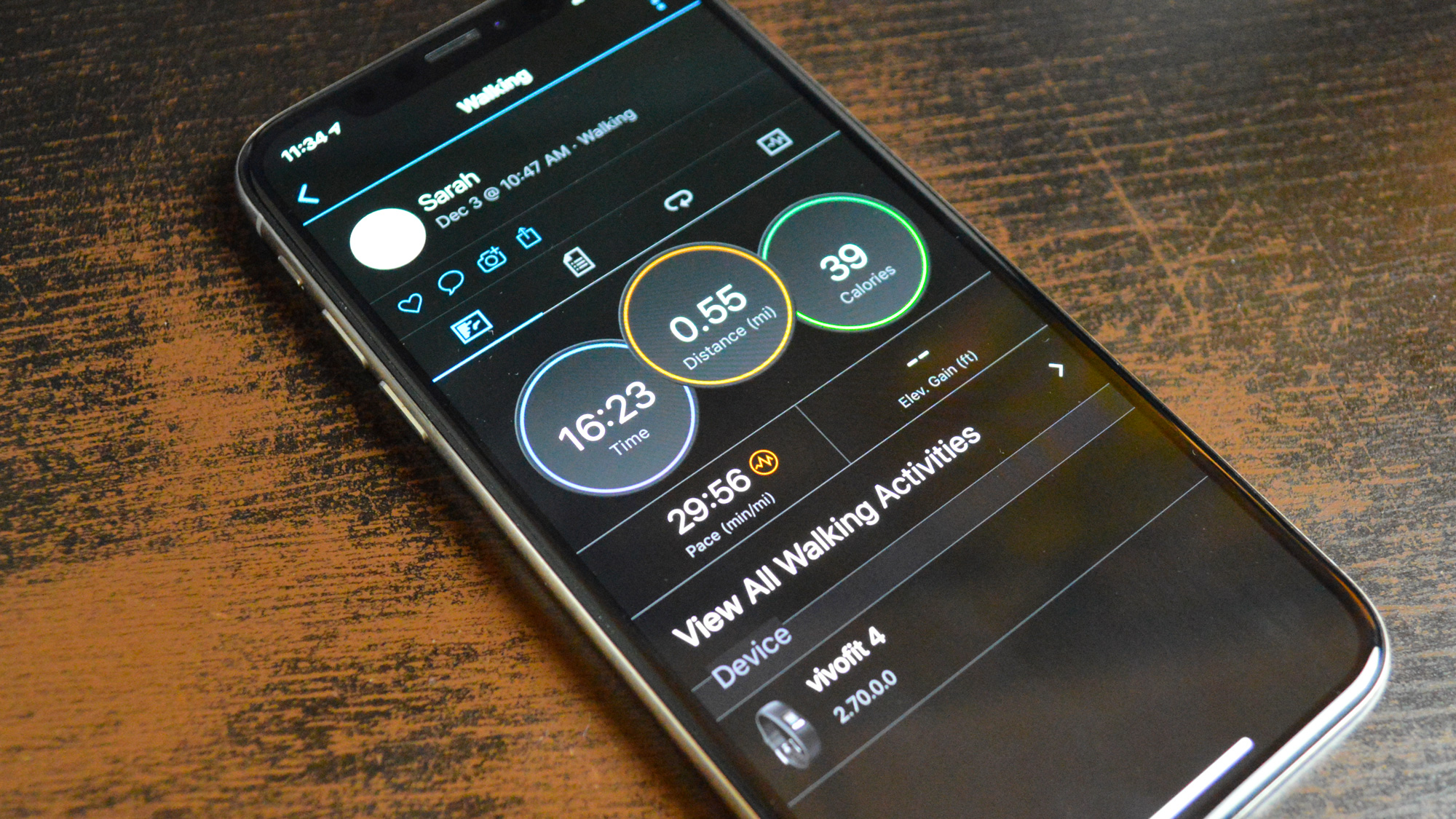
The Garmin Vivofit 4 did an excellent job of tracking my steps and distance — it was impressively accurate even when I was counting steps aloud. It picked up most of my workouts, but not all; however, it's worth noting that I mainly lift weights and avoid cardio. Garmin has always been cardio-focused, so I didn't expect it to pick up my non-cardio workouts as well as it did. If the Vivofit 4 doesn't automatically detect your workout and you forget to start workout mode manually, you can also retroactively add workouts in the Garmin Connect app for iOS or Android.
The Garmin Connect app is a little overwhelming at first — it's got a ton of menus and options you can toggle on and off — but once you take the time to explore it, it's useful and full of customizable features.
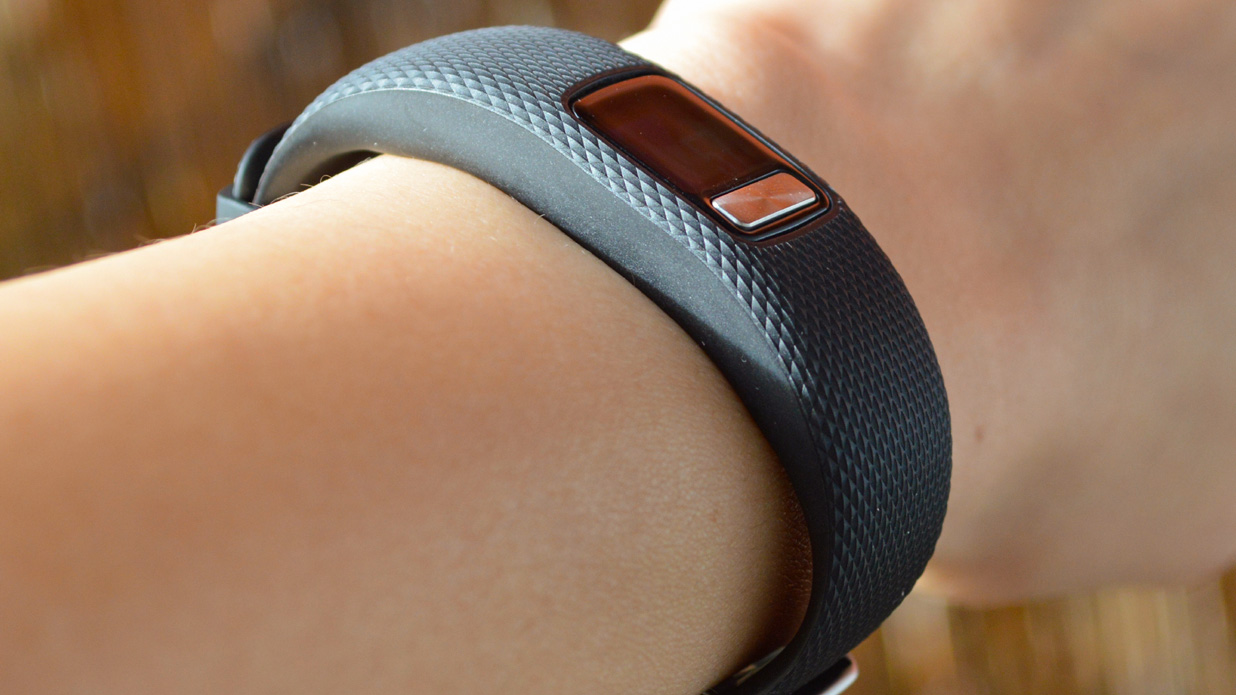
The Garmin Vivofit 4 also tracks sleep, but not very well. Maybe it's because Garmin's Move IQ technology needs movement to work. But the Vivofit 4 will definitely think you're asleep if you're sitting on the couch playing video games, lying in bed reading Reddit or even typing furiously at 2 a.m. while maintaining excellent posture and a neutral wrist position. Sleep tracking is where Fitbit still wins.
Bottom line
The Garmin Vivofit 4 costs $80, which isn't that cheap; you can find fitness trackers with heart rate sensors and push notifications for half that price. But that doesn't mean it's a bad deal. The Vivofit 4 definitely fits some niches: It does a solid job of actually tracking (most of) what it sets out to track without overwhelming casual users with confusing metrics. It's also backed by Garmin's app and ecosystem; if you're already part of that ecosystem, you may not need (or want) a wrist-based heart rate sensor or extra GPS, just an accurate fitness tracker that syncs with your other data and never needs to be charged.
The Garmin Vivofit 4 has its strengths, but trackers like the similarly priced Fitbit Inspire HR offer heart rate sensors and more accurate sleep tracking — features that are more likely to appeal to casual users looking for an entry-level tracker.
Sarah is a hardware enthusiast and geeky dilettante who has been building computers since she discovered it was easier to move them across the world — she grew up in Tokyo — if they were in pieces. She's currently senior editor at our sister site Tom's Hardware and is best-known for trying to justify ridiculous multi-monitor setups, dramatically lowering the temperature of her entire apartment to cool overheating components, typing just to hear the sound of her keyboard, and playing video games all day "for work." She's written about everything from tech to fitness to sex and relationships, and you can find more of her work in PCWorld, Macworld, TechHive, CNET, Gizmodo, PC Gamer, Men's Health, Men's Fitness, SHAPE, Cosmopolitan, and just about everywhere else. In addition to hardware, she also loves working out, public libraries, marine biology, word games, and salads. Her favorite Star Wars character is a toss-up between the Sarlacc and Jabba the Hutt.
